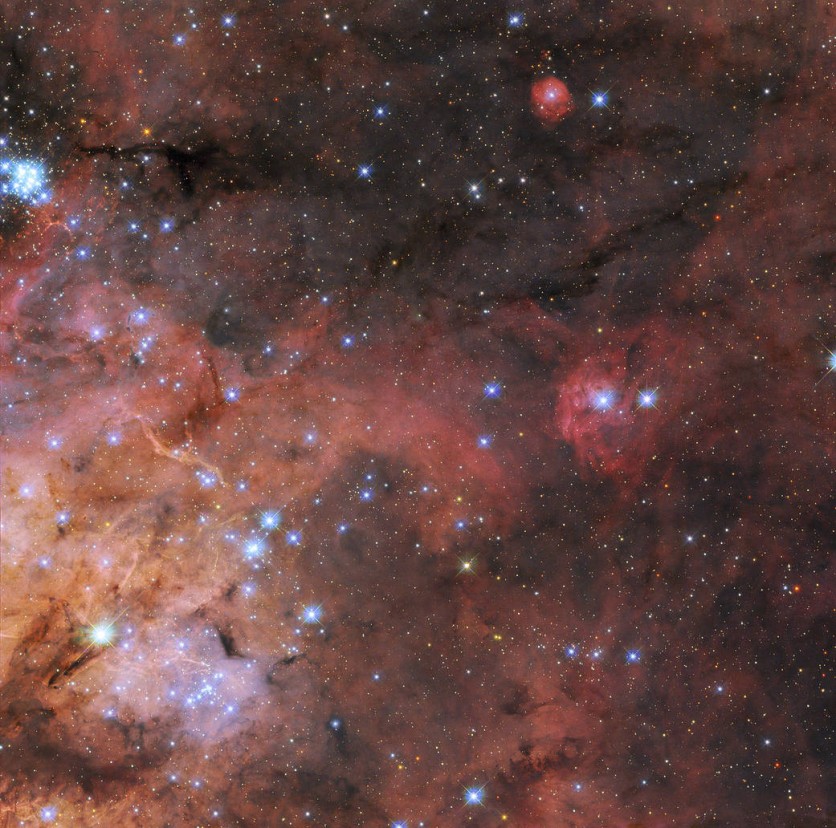NASA's Hubble Space Telescope captures a haunting yet enchanting view of Tarantula Nebula, also known as 30 Doradus, glittered in starlight and shaded with dark hues of red and orange.

Chaotic Clouds of Gas and Dust
The Tarantula Nebula is a massive region of ionized hydrogen gas that generates an abundance of stars located 161,000 light-years away from Earth in the Large Magellanic Cloud.
The region's bright, recently born stars appear to be surrounded by chaotic clouds of gas and dust in the newly-released image.
The hottest and largest known stars are found in the Tarantula Nebula, the brightest star-forming zone within our galactic neighborhood, according to NASA. Hence, it serves as an ideal natural laboratory for testing ideas of star formation and evolution.
This brand-new photograph mixes information from two distinct observing suggestions. The first was made to investigate the characteristics of the dust grains that make up the dark clouds looping across this image, which are found in the space between stars.
This proposal, called Scylla by astronomers, shows how interstellar dust interacts with starlight in various settings. It complements Ulysses, another Hubble program that examines stars.
Along with recording the stars of the Tarantula Nebula for future research with Webb, this image also uses data from an observation program investigating star formation under conditions resembling those of the early cosmos.
Webb's Infrared Vision Eyes Tarantula
The newly-minted James Webb Space Telescope recently captured the Tarantula Nebula with its powerful infrared vision. It caught distant background galaxies, young stars, and a detailed structure of the nebula's gas and dust.

Webb's high-resolution infrared instruments were directed at the tarantula to capture the image. The area appears to be the interior of a silk-lined burrowing tarantula's home when viewed with Webb's Near-Infrared Camera (NIRCam).
A cluster of massive young stars that glow pale blue in the image has hollowed out the nebula's cavity in the center of the NIRCam image. NASA notes that only the densest regions of the nebula's surroundings withstand erosion by the strong stellar winds of these stars, generating pillars that seem to point back toward the cluster.
These pillars hold protostars in the process of formation; soon, they will burst from their dusty cocoons and take turns sculpting the nebula. In fact, a young star was observed by Webb's Near-Infrared Spectrograph (NIRSpec) doing just that.
NIRSpec revealed that an insulating cloud of dust still surrounded the star and that it was only starting to escape from its pillar.
NASA notes that the star-formation process still has many mysteries to be uncovered. Hubble and Webb will continue capturing starry regions of the sky to expand our knowledge of how stars evolve.
Related Article : NASA's Hubble Space Telescope Captures 'Butterfly Nebula' In Stunning Motion | Fun Facts About This Beautiful Space Butterfly

ⓒ 2025 TECHTIMES.com All rights reserved. Do not reproduce without permission.




